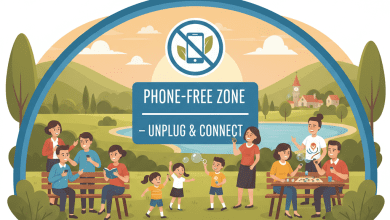

By Joachim Ng
An eerie stillness continues to envelope tourist spots in Ipoh as the COVID-19 offensive keeps up its brutal momentum. It’s like the Elliott Wave that comes with brief declines followed by a massive upsurge. Hoteliers and shopkeepers are now drowning in Wave 3, and yet we could have stopped the virus after Wave 1.
Two crippling weaknesses are hampering our response to the pandemic — we lack a sense of learning and a sense of foreboding. If the present brings glad tidings, we assume that the future will also bring glad tidings. If the road is straight we speed, and when there is suddenly a sharp bend, it’s too late to brake.
Up to the end of September 2020, the number of COVID-19 cases throughout Malaysia was below 500 per day. Such glad tidings, and we thought it would last. Then came Wave 2. In one month, October 2020, cases went from below 500 to above 1,000 per day. In November 2020, cases went above 2,000 per day. Two months later, in January 2021, daily cases had surged above 5,000.
Wave 2 could have been prevented if we had a sense of learning and a sense of foreboding. Singapore’s Wave 1 ended in March 2020 with daily cases below 1,000. Then came Wave 2 in April 2020, and cases went above 1,000 per day. In May 2020, cases once again registered below 1,000 and have kept below 1,000 ever since.
Singapore had been caught off guard by the extremely crowded living conditions in foreign worker dormitories. This brought on Wave 2. But you have to be a retired hermit not to know that similarly crowded dormitories are far more prevalent in Malaysia.
Singapore took only one month to stabilise the numbers because its migrant worker dorms were centralised in a few locations. In Malaysia, foreign worker homes spring up everywhere like seeds that blow into your garden. You find them in housing estates and condominiums, industrial zones and construction sites.
Cramped with double-decker beds and floor mattresses, these dorms were lining up at a traffic-stop light to become infection clusters. Mother Nature kindly gave Malaysians a six-month learning period from April 2020 to September 2020. On September 26, 2020, Malaysia recorded only 82 new cases. Then on October 24 we hit a record-breaking 1,228 new cases. We had learnt nothing from Singapore.
We can be excused for not learning anything from the Sabah state elections, as politicians are among the worst learners. But can we be excused for not learning from the Singapore dormitory experience?
A menace waited at every corner and nobody had a sense of foreboding that what happened in Singapore would happen in Malaysia, and on a very much larger scale. Singapore’s dorm surge was a preview of the disaster coming our way.
Nature gave us a six-month grace period to develop abundant cheap housing for our foreign workers and space them out to relieve crowding. All we had to do was modify regulations to allow the prefabrication of modular panels offsite and transport them to centralised public land sites or private vacant lots where they could be fitted together like jigsaw pieces.
This rapid modular technique using lightweight engineered timber is one-tenth of normal house pricing as there is little steel or concrete, minimal substructure requirement and no costly utility works. Rooftop solar panels generate electricity, and water can be supplied through kiosks equipped with filtration systems.
Conventional housing is steep in price because of land costs, infrastructure costs, deep substructure costs, licensing, conversion, and approval costs. These comprise more than half the total cost. Building materials, architectural fittings, labour, and marketing take up the remaining cost.
A quarter-million cheap modular housing units could be manufactured and installed within six months, if we worked at the speed of China. But we did nothing to cut the tangled web of stifling authority regulations and also to shake off private sector inertia.
Wave 2 ended in March 2021, giving us a one-month respite when cases fell below 2,000 per day. Then came April 2021 and cases hit far above 2,000. Wave 3 had begun and again it could have been avoided, but still we failed to develop a sense of learning and a sense of foreboding.
Wave 2’s lesson is that the virus spreads primarily through crowding. Its flying distance is limited to 1 metre in normal talking mode and 2 metres if you’re shouting, singing, coughing, or giving a political speech. All we have to do is to ban crowd formation.
Yet as late as February-March 2021, the health departments of Perak, Pahang, Selangor, Johor, Penang, Melaka, and Sarawak were still discovering foreign labour hostels with at least three sleeping in one room including the living room. Up to April 2021, only one-third of employers were complying with the Workers’ Minimum Standards of Housing and Amenities Act.
Throughout April we saw daily crowds jamming the supermarkets, popular restaurants, roadside stalls, school gates after dismissal, and festive bazaars. Infections are now spreading among local Malaysians like wildfire. Wherever there is a crowd, there is COVID-19. The denser the crowd, the better for COVID-19.
Enforcement personnel have become obsessively focused on checking whether the crowd has done the MySejahtera scan. But MySejahtera isn’t a preventive measure, as it merely records where you are. Enforcement should be focused on stopping crowd formations anywhere, defining a crowd as any gathering where physical distancing between two persons at any spot is less than a metre even for 10 seconds.
If 50 people line up for MySejahtera scanning to enter a tiny minimart, eatery, or shop, is that SOP compliance? No, the police should order half of them to disperse. Prevention isn’t just wearing masks. It includes physical distancing.
Shut down any place that is a repeat offender. The virus is tough, but we are soft. So who do you think is the champion fighter?


